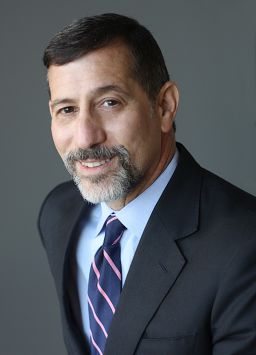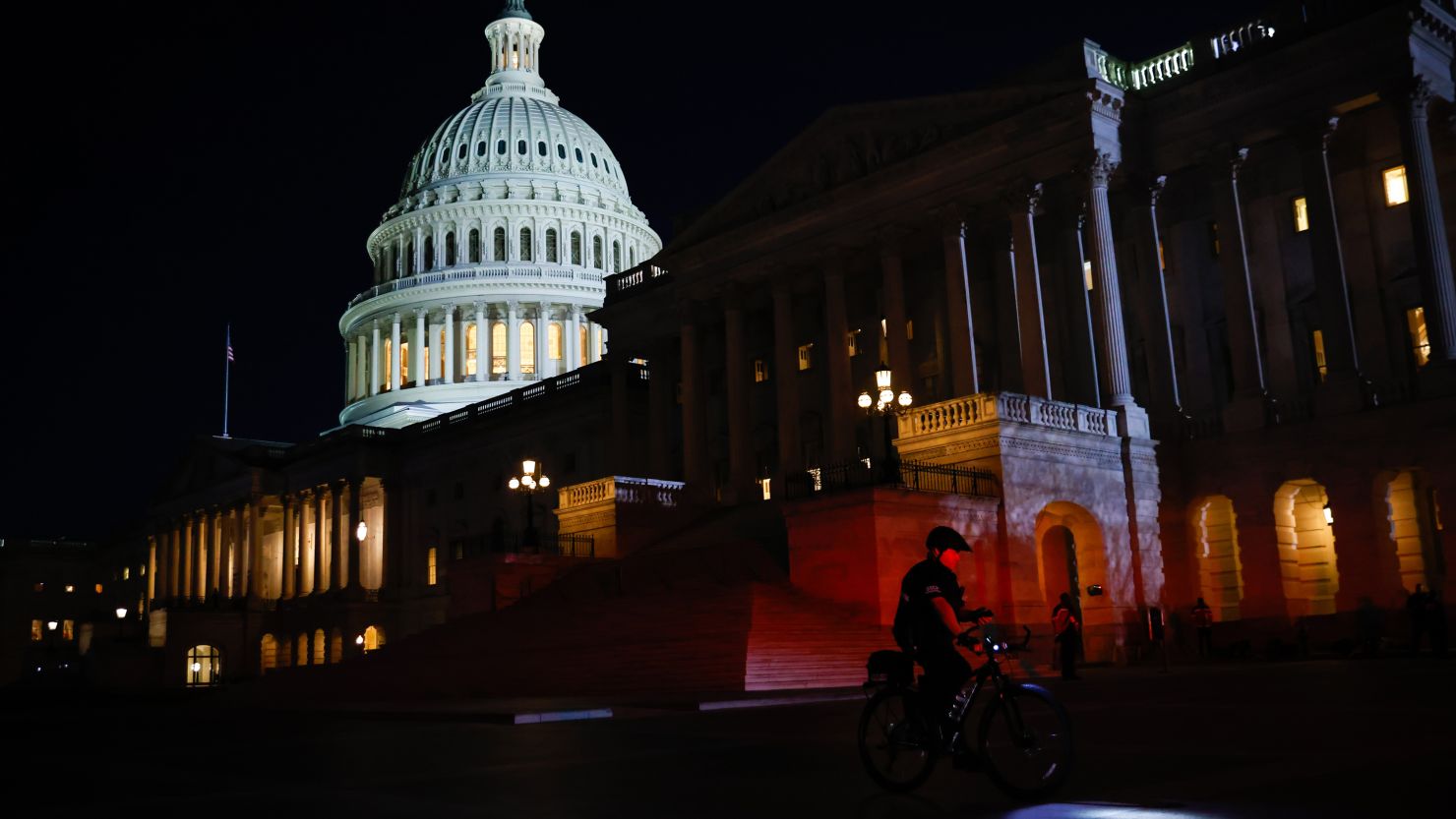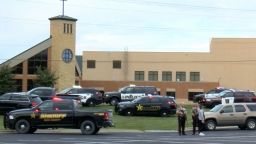Editor’s Note: Bruce Hoffman is senior fellow for counterterrorism and homeland security at the Council of Foreign Relations and a professor at Georgetown University. Jacob Ware is a research fellow at the Council of Foreign Relations and an adjunct professor at Georgetown University and DeSales University. This article is adapted in part from their new book, “God, Guns, and Sedition: Far-Right Terrorism in America” (Columbia Univ. Press). The views expressed in this commentary are their own. View more opinion at CNN.
Three months into 2024, it seems dire predictions of political violence are now commonly issued both by the country’s extreme fringes as well as from the mainstream. Former President Donald Trump has been perhaps the most vociferous prognosticator, warning that there would be “bedlam in the country” should the criminal charges against him lead to a 2024 election loss. Nowadays, even seemingly mundane political procedures can also result in promises of violence. When the US Supreme Court sided with the Biden administration in January, allowing federal border agents to remove concertina wire put in place by the state of Texas, some in elected office said it was a sign of civil war. In its threat assessment for 2024, the Department of Homeland Security forecast that, among other threats, the 2024 election cycle would be a “key event for possible violence…”

In her 2022 book, “How Civil Wars Start: And How to Stop Them,” renowned political scientist Barbara F. Walter argues that “we are closer to civil war than any of us would like to believe” because of a toxic mix of political extremism and polarization, social and cultural tribalism, the popular embrace of conspiracy theories, proliferation of guns and well-armed militias and the erosion of faith in government and the liberal, Western democratic state. Among the key factors she cites is accelerationism — which Walter describes as “the apocalyptic belief that modern society is irredeemable and that its end must be hastened, so that a new order can be brought into being.”

Accelerationism is embraced by a spectrum of white supremacists, white nationalists, racists, antisemites, xenophobes and anti-government militants as a clarion call to revolution. They fervently believe that the modern Western, liberal state is so corrupt and inept that it is beyond redemption and must be destroyed in order to create a new society and way of governance.
With the West supposedly on the precipice of collapse, accelerationism’s adherents maintain that violent insurrection is required to push democracy over the edge and into oblivion. Only by hastening its destruction can a White-dominated society and new order emerge, the thinking goes. Fomenting divisiveness and polarization through violent attacks on racial minorities, Jews, liberals, foreign interlopers and power elites, and thus producing a cataclysmic collapse of the existing order and provoking a second civil war, accordingly, is accelerationism’s stock-in-trade.
But this terrorist strategy is in fact part of a long tradition of extreme, destabilizing far-right violence. To understand why, and to put those events in broader context, one has to view January 6, 2021, as another milestone in a trajectory that commenced in the late 1970s and gathered momentum throughout the 1980s. Its evolution slowed following the nationwide law enforcement crackdown after the 1995 Oklahoma City bombing, but was infused with new purpose after Barack Obama was elected president in 2008 and the Great Recession stunned the country that same year. And, it was subsequently weaponized in the 2010s by social media and further empowered by the febrile rhetoric and polarization of politics that continued to divide America.
Steven Simon and Jonathan Stevenson, two former National Security Council staffers with deep knowledge of sectarian conflicts in Northern Ireland and the Middle East, have similarly described a situation where the United States could easily tip into civil war. The country, they write, “now appears to be in a state of ‘unstable equilibrium’ — a term originating in physics to describe a body whose slight displacement will cause other forces to move it even further away from its original position,” heightening the risk that violent action could plunge the United States into the chaos and disorder that accelerationists so desperately want.
The most dismal assessment, though, is that of Canadian journalist Stephen Marche who, in his 2022 book, The Next Civil War: Dispatches form the American Future, contends that a new American civil war is inevitable. “The United States is coming to an end. The question is how.” To his mind, “The United States is descending into the kind of sectarian conflict usually found in poor countries with histories of violence, not the world’s most enduring democracy and largest economy.”
As febrile and alarmist as such assertions may be, there is more than a grain of truth behind these fears. A 2021 survey conducted by the University of Maryland’s Center for Democracy and Civic Engagement and the Washington Post had found that almost a quarter of Democrats and 40% of Republicans believe the use of violence against the government is “somewhat justified.”
This was the highest percentage of respondents to this question dating back more than two decades. These concerns have hardly diminished, according to a new survey recently conducted by both the Post and the same University of Maryland center in 2024. “Republicans are more sympathetic to those who stormed the US Capitol and more likely to absolve Donald Trump of responsibility for the attack,” the Washington Post reported, “than they were in 2021.”
But neither polls nor predictions are prophecy. While we think the likelihood of a civil war is relatively low — in large part because America’s political divides no longer fall into clear-cut geographic categories like North versus South, nor do they center around one contentious issue like slavery — the country now faces a different kind of threat. Defying simple red state-blue state differences or urban versus rural divides, a different form of violence, manifesting more as sustained and nationwide terrorism than organized separatism, is potentially more likely.
Remember that the United States leads the world — by far — in the number of firearms in private hands. Although the United States comprises only 4% of the world’s population, it accounts for roughly 40% of the globe’s firearms, according to Small Arms Survey, an independent research project based in Switzerland. There are an estimated 393 million privately held firearms in the United States — more than one gun per person. In fact, there are more civilian-held guns in the United States than the other top 25 countries in the world combined. Indeed, more guns were purchased in the United States in 2020 — nearly 23 million — than any other year on record. This proliferation of privately-held weapons in the United States, Simon and Stevenson observe, “make the leaderless resistance advocated by the late-twentieth-century militia theoreticians and now epitomized by the far right, anti-authoritarian Boogaloo Bois — they of the Hawaiian shirts — all the more practicable.”
Indeed, among the most fervent defenders of Second Amendment rights are people who express their desire for a new civil war. Gun rights also electrified the militia movement in the early 1990s and played a major role in motivating Timothy McVeigh to carry out the 1995 Oklahoma City bombing, the deadliest terrorist attack on American soil until September 11, 2001.
If the United States avoids an actual civil war, it is not difficult to imagine a variety of dark scenarios spanning a range of politically violent potentialities that would destabilize the country, further entrench existing divisions and severely challenge our government’s ability to protect its citizens. In his 2023 book on the erosion of democratic norms in America, then-Council on Foreign Relations President Richard Haass raised the possibility of the US facing a version of Northern Ireland’s longstanding “Troubles”.
“If there is a model for what we should fear,” Haass warns, “it comes from Northern Ireland and the Troubles, the three-decade struggle starting in the late 1960s that involved multiple paramilitary groups, police, and soldiers and resulted in some 3,600 deaths and a sharp reduction in local economic output.” Leading American white supremacists, who have long been among the foremost advocates of civil war and sedition, have cited the Northern Irish exemplar and the province’s preeminent terrorist organization, the Irish Republican Army (IRA), as worthy of emulation. “Soon, our own version of the ‘Troubles’ will be widespread,” Robert Miles, one of the early leaders of America’s violent far-right underground, wrote under his Norse code name “Fafnir” on a 1980s online forum. “The patterns of operations of the IRA will be seen across this land. […] Soon, America becomes Ireland recreated.”
Despite the ultimately successful certification of the 2020 presidential election; the arrests of over 1,000 rioters who participated in the January 6, 2021 storming of the US Capitol; the guilty pleas or convictions of at least half of those cases; and the mostly peaceful events surrounding the 2022 midterm elections, the threat of far-right terrorism in America continues.
Given the long historical trajectory that culminated in the events of January 6, the continued proliferation and pervasiveness of conspiracy theories and the growing racism, antisemitism and xenophobia that has entered the mainstream of political and social discourse in the United States, along with readily accessible weapons, the potential for new acts of domestic, politically-motivated violence — including mass shootings, attacks on critical infrastructure, bombings and other attacks — cannot be dismissed or ignored.


